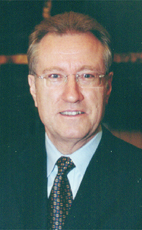Mr. Chairman, quality of life has been a very high priority for me. It has been a high priority for the government. After all, what organization has people that are willing to put their life on the line as part of their job? We owe these people a lot of gratitude. There was some discussion about what constitutes a hero the other day. A person who walks in the door and fills in the application is a hero for being willing to take on that unlimited liability and responsibility that could lead to the loss of the individual's life. Recently we saw how painful the reality of that can be.
I set out when I became minister to deal with this matter. I am very grateful to the Standing Committee on National Defence and Veterans Affairs for its contribution to this.
I heard a number of stories from people across the country who were having difficulty making ends meeting. They were having difficulty with having to go to food banks or with not getting the kind of repairs that were necessary for decent housing accommodation in terms of the married quarters. There were other things, such as a spouse getting a job upon moving to a new base of operations or issues of child care and other support services.
I asked the SCONDVA committee to look at the matter. Many members of the SCONDVA committee and the former chairman at the time, who is also in the Chamber tonight, took up the cause, went across the country and brought a lot of attention and awareness to the people of Canada, to parliament and the government on this issue.
As a result, committee members produced a report with some 89 recommendations. I am pleased to say that 68 of them have now been completed and the rest of are works in progress. A report is about to be issued to that effect as the annual update report.
We first tackled the pay and benefit issues. The amount of money, as a percentage, we ended up giving to our troops as an increase even surpassed what the committee had recommended. We saw that the remuneration was out of whack with the public service. We needed to make the kind of changes to ensure that we continued to attract people, but also at the same time recognize the kind of contribution that these troops were making.
We went on from there to other benefit packages. One new provision we put into effect was something called the post living differential allowance. For example, a naval person lives in Halifax and is transferred to the other coast to Esquimalt, the Victoria area. There is a big difference in the cost of living from one coast to the other. This can also be found in many other parts of Canada. If a person goes to Yellowknife in the territories, the cost of living is quite high in that location.
We then set about dealing with the housing conditions. We have invested $186 million over five years to improve the housing conditions of Canadian forces housing properties. We opened a centre that is a co-sponsorship project with the Department of Veterans Affairs to look after injured and retired service members.
We then established operational trauma and stress support centres, recognizing PTSD, post traumatic stress disorder, the very horrible conditions that some of our troops have experienced, like those who served in Rwanda. We all know quite well the kind of situation that General Dallaire went through as did many of the other people who served in that theatre of operation.
We then went on to dealing with our family support centres as a means of also helping the spouses and the children of our force members. We have increased very substantially those support operations.
We have to bear in mind that the invisible support of our troops overseas is the families back home. When I was in Halifax seeing one of the ships off in Halifax, they were passing out invisible, see-through ribbons, all to stress the point that there is an invisible part of the Canadian forces; the families who stay back home and wait out the period of service that these people have undertaken when they travel. Those family support centres become important, as do the traditional kinds of supports in the rear parties, the regiments, the units that also try to rally around the families of the members who have been sent overseas.
The family support centres have grown enormously and there are some fine facilities throughout the country. Day care operations are part of that and it is of significance for the families. We are pleased that we were able to do that in the last five years. That very clearly indicates the kinds of priorities that the Liberal government has and the kind of support we want to give to our troops and to their families.
I am however sorry to mention that there is one party in the House that voted against the quality of life report. That was the Canadian Alliance. Obviously the previous member who spoke was more concerned about the main battle tank than she was about the quality of life for our troops. We believe though that there has to be a balance in all these things. The quality of life is important but it is also important to have the right equipment, the right training and the right leadership. These things all in balance make for a successful Canadian forces. That is the kind of balance that the government is committed to providing.

